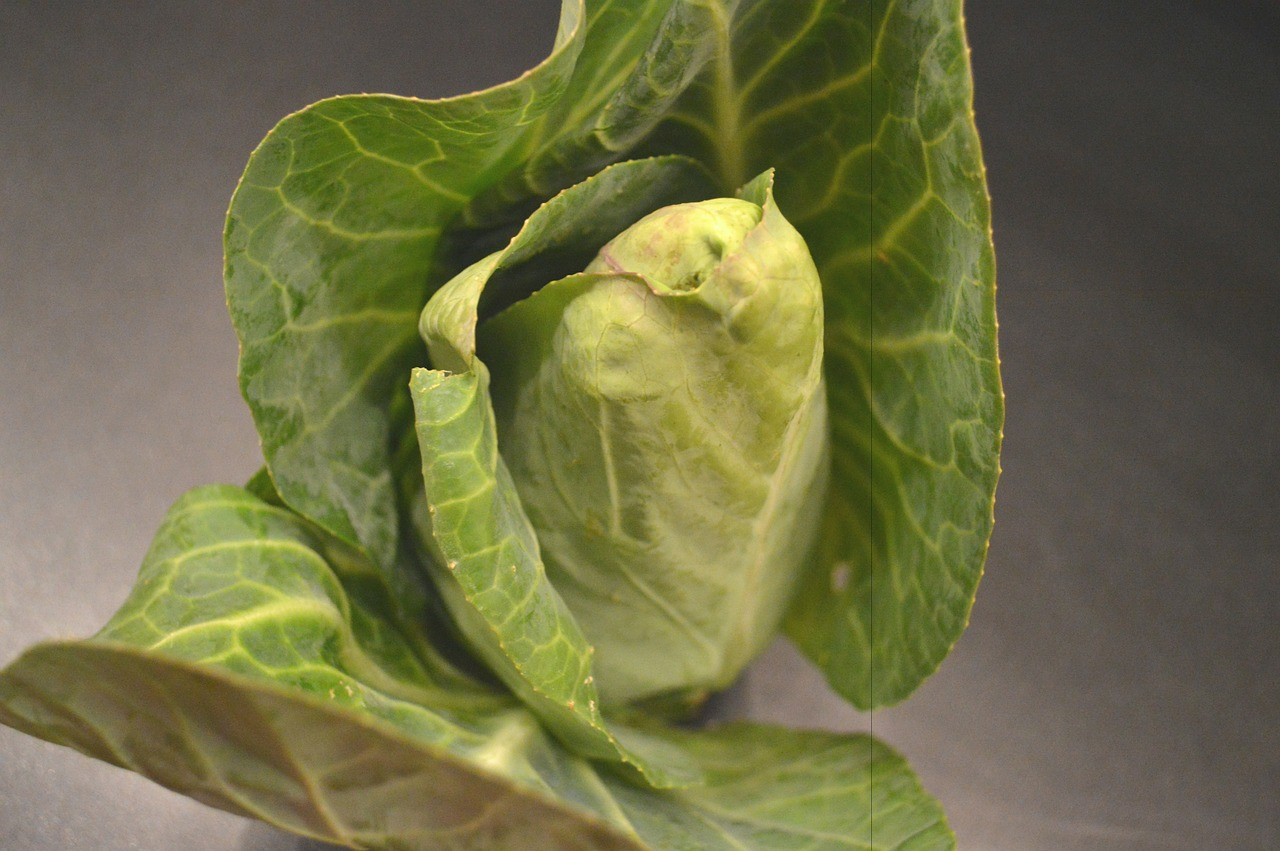
Growing, Caring for and Harvesting Pointed Cabbage
The slender variety of white cabbage offers many advantages: pointed cabbage is particularly tender and well tolerated. It is also ideal for smaller gardens, as it does not take up as much space as other types of cabbage. You can also make delicious sauerkraut with pointed cabbage. You can find out why pointed cabbage should not be missing from your garden in this article.
This Article Contains:
- How Does Pointed Cabbage Grow?
- Preplant Pointed Cabbage: Here’s How
- Sowing Pointed Cabbage: Direct Sowing in the Vegetable Patch
- Pointed Cabbage in Mixed Cultivation: Crop Rotation, Succession Planting & Companion Plants
- Caring for Pointed Cabbage for a Rich Harvest
- Pointed Cabbage Varieties: Early and Late Varieties
- Harvest Time: Harvesting and Storing Pointed Cabbage
- Diseases of Pointed Cabbage: Cabbage White Butterfly, Cabbage Hernia & Powdery Mildew
- Propagate Cabbage: Here's How
- Frequently Asked Questions About Growing Pointed Cabbage
Quick Overview
Overview of Pointed Cabbage Cultivation:
- Light: sunny to semi-shady
- Water requirement: an even water supply is important for healthy growth and tender leaves
- Nutrient requirements: high (heavy feeder)
- Soil: loamy to sandy, rich in humus
- Germination temperature: 16 - 20 °C/60.8 - 68 °F
- Planting depth: 1 - 2 cm/0.4 - 0.8 in
- Planting distance: early cabbage 40 x 40 cm/15.7 x 15.7 in, late cabbage 50 x 50 cm/19.7 x 19.7 in
- Good companion plants: peas, potatoes, leeks, lettuce, celery, spinach, tomatoes, chamomile, coriander, caraway (herbs for aroma)
- Bad companion plants: mustard, other types of cabbage, onions, garlic, turnips, horseradish, fennel bulbs
How Does Pointed Cabbage Grow?
Normal cabbages are often very large plants, leaving little space in the bed for other crops. This is precisely the advantage of pointed cabbage: as a slimmer version of white cabbage, the cabbage head does not require as much space and can be easily combined with other crops. A great alternative for smaller gardens too. Due to its smaller size, pointed cabbage takes less time to grow, which means it can be harvested relatively early (from May). Its leaves are also more tender than those of large white cabbage, making it particularly tasty and easier to digest. For this reason, however, the storage life of pointed cabbage is not quite as good as that of other types of cabbage.
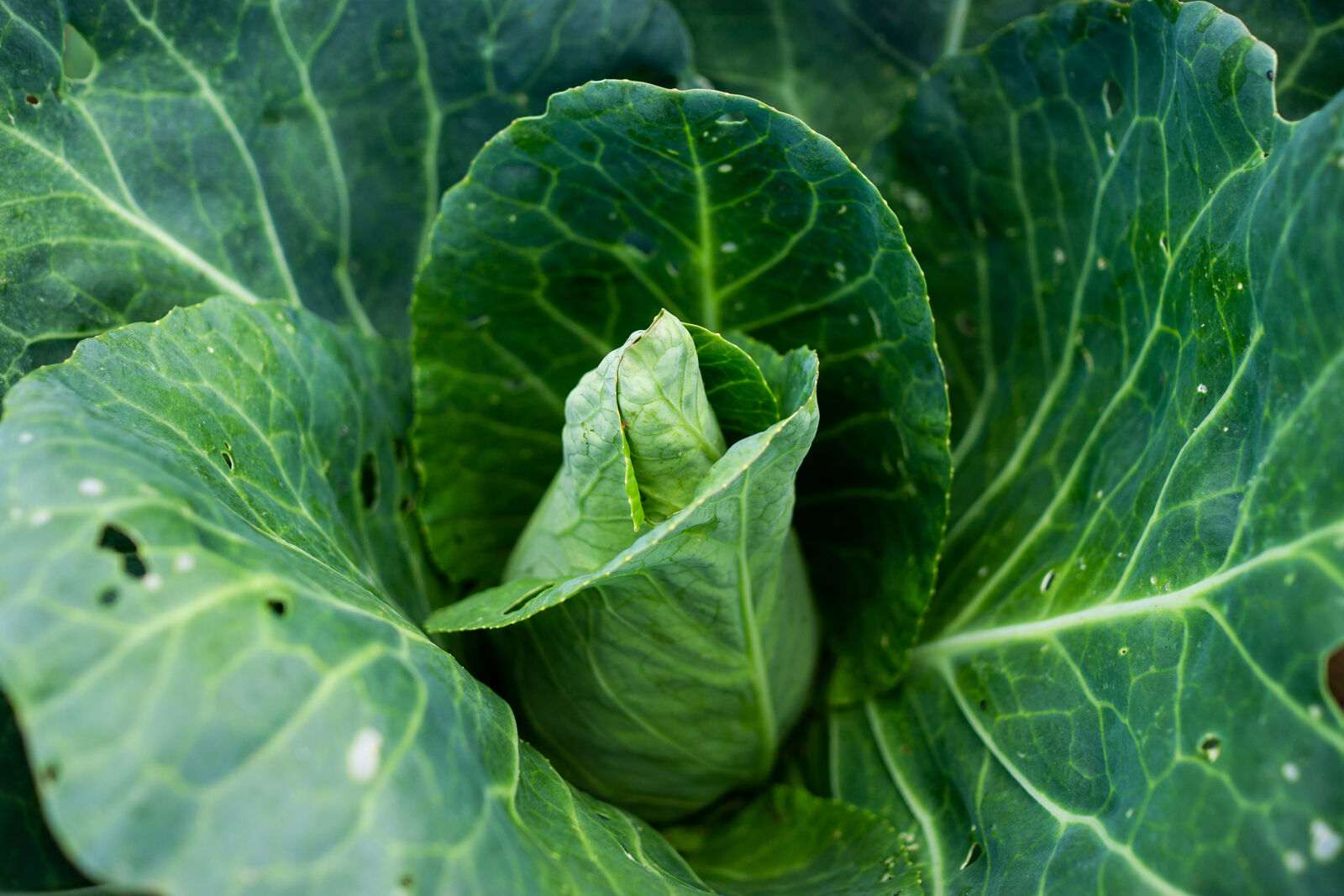
The Right Location & Soil
Pointed cabbage prefers full sun, but also does well in partial shade. Your bed should be well fertilized and mulched beforehand, because as a heavy feeder , pointed cabbage needs plenty of nutrients. The soil should also be rich in humus and loamy. Even watering ensures good, healthy growth and particularly tender leaves.
Preplant Pointed Cabbage: Here’s How
The cultivation procedure is similar to that for red cabbage, white cabbage and savoy cabbage. You can find more tips on growing cabbage in this article. However, if you want to harvest in May, you should start pre-cultivation in January. It can also be pre-grown in February and March. It is best to choose suitable early varieties for this. Place the seeds 1 - 2 cm/0.4 - 0.8 in deep in pots or multi-plates filled with potting compost. For germination, cabbage plants require a germination temperature of approx. 16 - 20 °C/60.8 - 68 °F as well as sufficient light and moisture. It is therefore best to place the pots on a windowsill or in a heated greenhouse. From March, you can plant them out with a planting distance of approx. 40 x 40 cm/15.8 x 15.8 in. Be sure to cover the sensitive young plants with fleece at night to prevent them from freezing.
Sowing Pointed Cabbage: Direct Sowing in the Vegetable Patch
Later summer varieties can be sown directly into the bed from April to the beginning of May. Late sowings can be harvested from June. There are also robust varieties, e.g. 'Duncan', which you can sow in August. When sowing in midsummer, however, it is essential to ensure regular watering so that the seeds germinate reliably and the young plants can develop healthily. Protect the cabbage plants with a fleece in the fall so that you can harvest them in winter. You should prick out the young plants about a month after sowing. These later varieties need a little more space than earlier ones. Therefore, ensure a planting distance of 50 x 50 cm/19.7 x 19.7 in. Your pointed cabbage will be ready to harvest after approx. 100 days.

Exchange with fellow gardeners
To exchange ideas with other gardeners and benefit from their experience, you can visit our Fryd community. Maybe someone has already propagated pointed cabbage and can give you some tips.
Join our garden communityPointed Cabbage in Mixed Cultivation: Crop Rotation, Succession Planting & Companion Plants
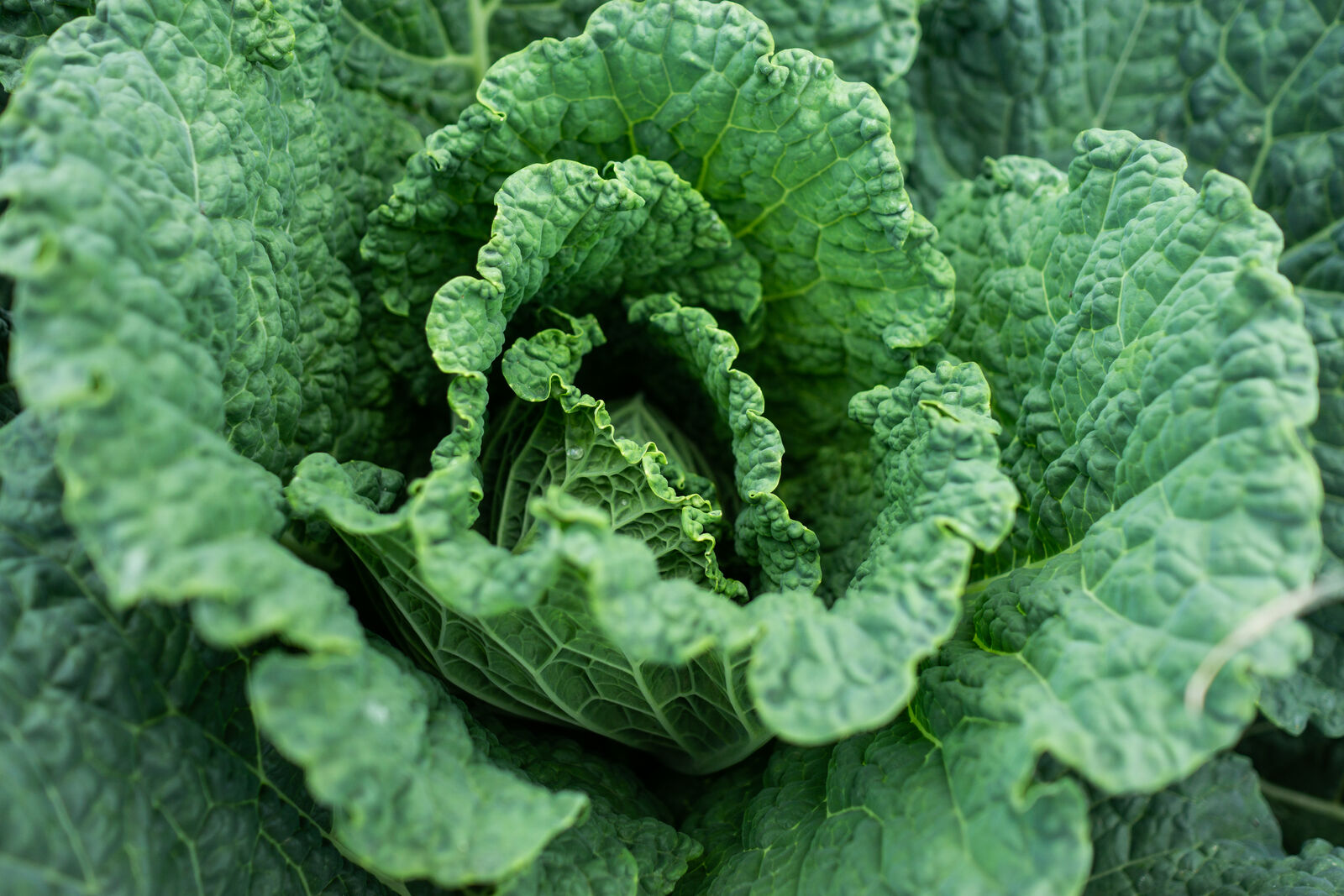
It is best to plant your pointed cabbage in a mixed culture. This way you can prevent pests and diseases. A mixed culture of pointed cabbage together with tomatoes and celery can prevent cabbage white butterflies, for example. You can find more good and bad plant companions and examples of cabbage in mixed cultivation here in the article. Here you will also find tips on succession cropping and crop rotation. In general, however, it is important to take a break from growing cabbage crops for at least 4 years. This is especially true if your cabbage crops were infested with diseases and/or pests.
Table: Good Companion Plants, Bad Companion Plants
| Good Companion Plants | Bad Companion Plants |
|---|---|
| Beans | Leafy cabbage |
| Dill | Cauliflower and broccoli |
| Peas | China cabbage |
| Camomille | Strawberry |
| Potatoes | Fennel |
| Coriander | Chervil turnip |
| Leek | Garlic |
| Lemon balm | Cabbage |
| Carrots | Turnip and swede |
| Salads | Horseradish |
| Celery | Brussels sprouts |
| Spinach | Mustard |
| Thyme | Onion |
Caring for Pointed Cabbage for a Rich Harvest
To keep the leaves nice and tender, you should water your cabbage plants regularly. Weed your bed regularly to prevent weeds from getting out of hand. A layer of mulch is an advantage here, as it not only prevents weeds from growing, but also helps to keep the soil moist. It is also important to keep enough space between the plants, otherwise the heads will become small and the plants more susceptible to disease. Here are a few more tips to avoid cabbage diseases:
Tips Against Diseases and Pests
- Algae lime in the planting hole against cabbage hernia
- Mixed cultivation with tomatoes and celery
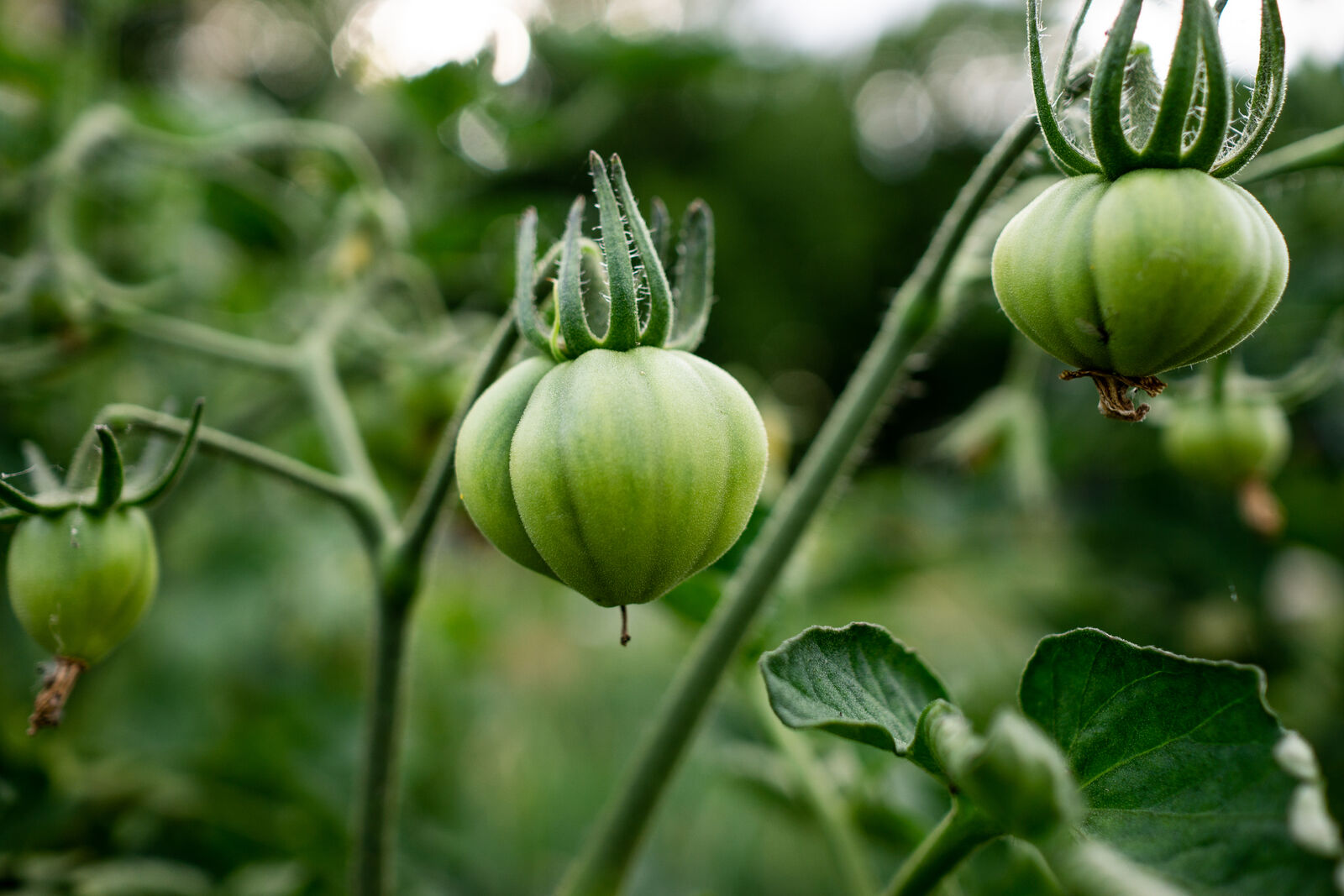
Fertilize Pointed Cabbage
Before planting, you should prepare your bed with organic fertilizer. You can use rotted manure and horn meal for this. Compost alone is often not sufficient as a source of nutrients for cabbage, which is why you can mix it with horn shavings. A thicker layer of mulch (e.g. from dried grass clippings) also provides nutrients. During the growth phase, you can top up with nettle manure and rock flour. Organic liquid fertilizer also supports the growth of your plants.
Pointed Cabbage Varieties: Early and Late Varieties
Early Pointed Cabbage Varieties (Harvest From May):
- 'Erstling': particularly early and fast-growing variety that can be brought forward as early as January
- 'Berns': medium-early variety with gray-green leaves
Late Pointed Cabbage Varieties (Harvest From May):
- 'Filderkraut': medium-late, very sugary variety, well suited for sauerkraut production
- 'Duncan': can be grown all year round, particularly robust
- 'Kalibos': cross between pointed and red cabbage, resulting in red-purple and loose heads
Harvest Time: Harvesting and Storing Pointed Cabbage
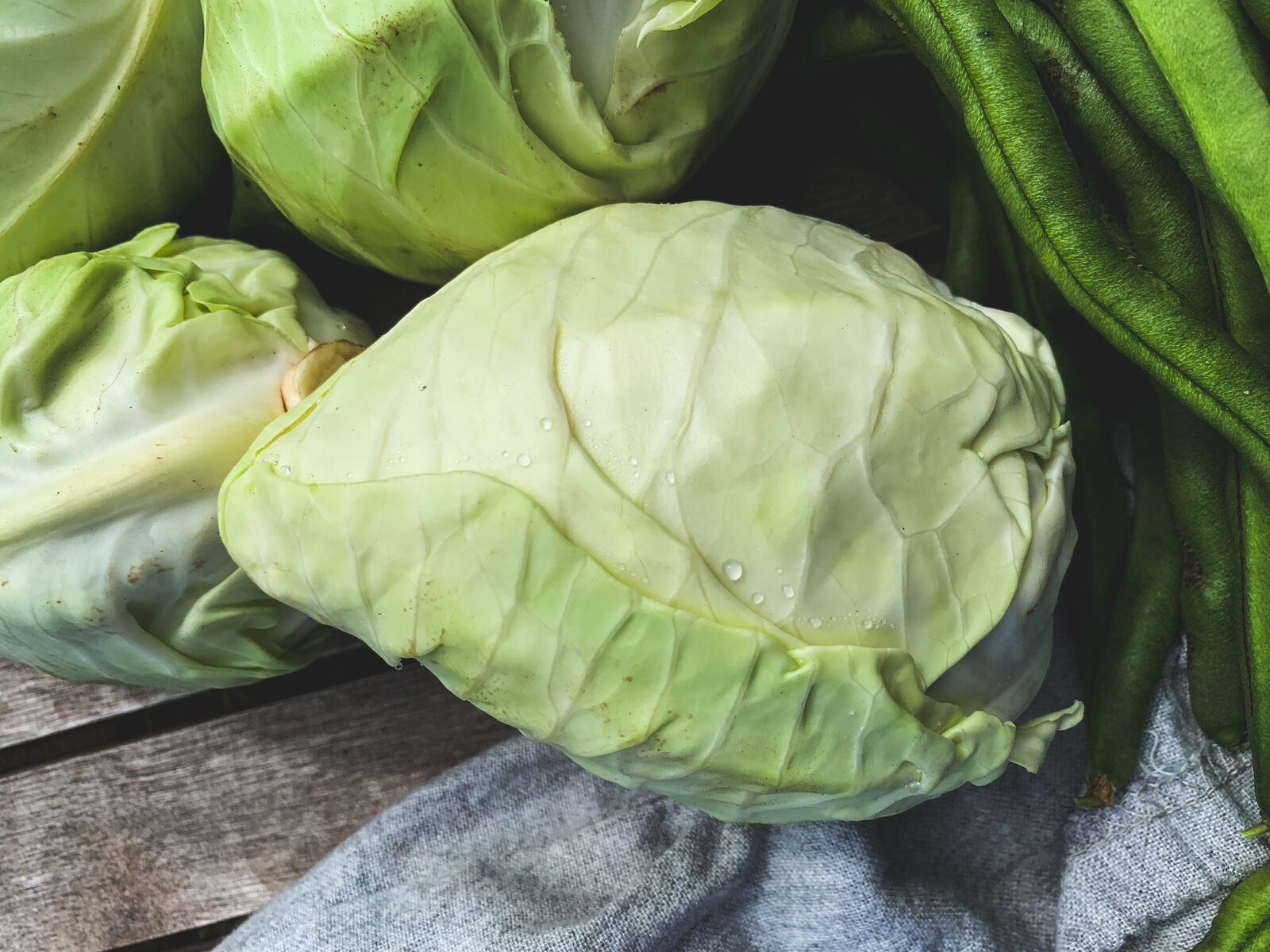
The pointed cabbage harvest season is between May and December. As soon as the head has reached the desired size, you can cut it off with a sharp knife just below the stalk. You should remove the root later so that no diseases remain in the soil. Alternatively, you can also pull the head and root out of the ground. Pointed cabbage cannot be stored for long due to its tender leaves. Wrapped in a damp cloth and kept in a cool place, a head of cabbage can be stored for around 1-2 weeks. However, you can easily preserve your cabbage by fermenting it and turning it into sauerkraut. Freezing raw leaves is not recommended; they should be blanched briefly beforehand. This preserves the flavor, firmness and vitamins better.
Diseases of Pointed Cabbage: Cabbage White Butterfly, Cabbage Hernia & Powdery Mildew
As with all cabbage varieties, pointed cabbage can be infested by the caterpillars of the cabbage white butterfly. The moth lays its eggs under the leaves of the cabbage. As soon as the caterpillars hatch, they begin to systematically devour the leaves, causing the plant to die in extreme cases.
Preventing & Combating Cabbage White Butterflies
The white butterfly is particularly attracted to your garden if you apply nettle slurry to strengthen your plants. You can prevent infestation by planting tomatoes and celery next to your cabbage. The intense smell of the companions will mask that of the cabbage and the butterflies will no longer find where to lay their eggs. Also regularly check the undersides of the leaves of the young plants, as this is where the butterfly attaches its eggs. If you are planting later in the season, you can mulch with tansy or peppermint if available - both plants repel the butterflies. But you can not only prevent infestation biologically, the pests can also be kept away mechanically using crop protection nets.
However, if it is already too late and the caterpillars are already there, it is worth collecting them by hand at an early stage. You can also use parasitic wasps as beneficial insects in your garden, as they are natural enemies of the cabbage white butterfly. These biological pest controllers can be ordered from various online stores. You can find more tips on combating and preventing cabbage white butterflies in this article.
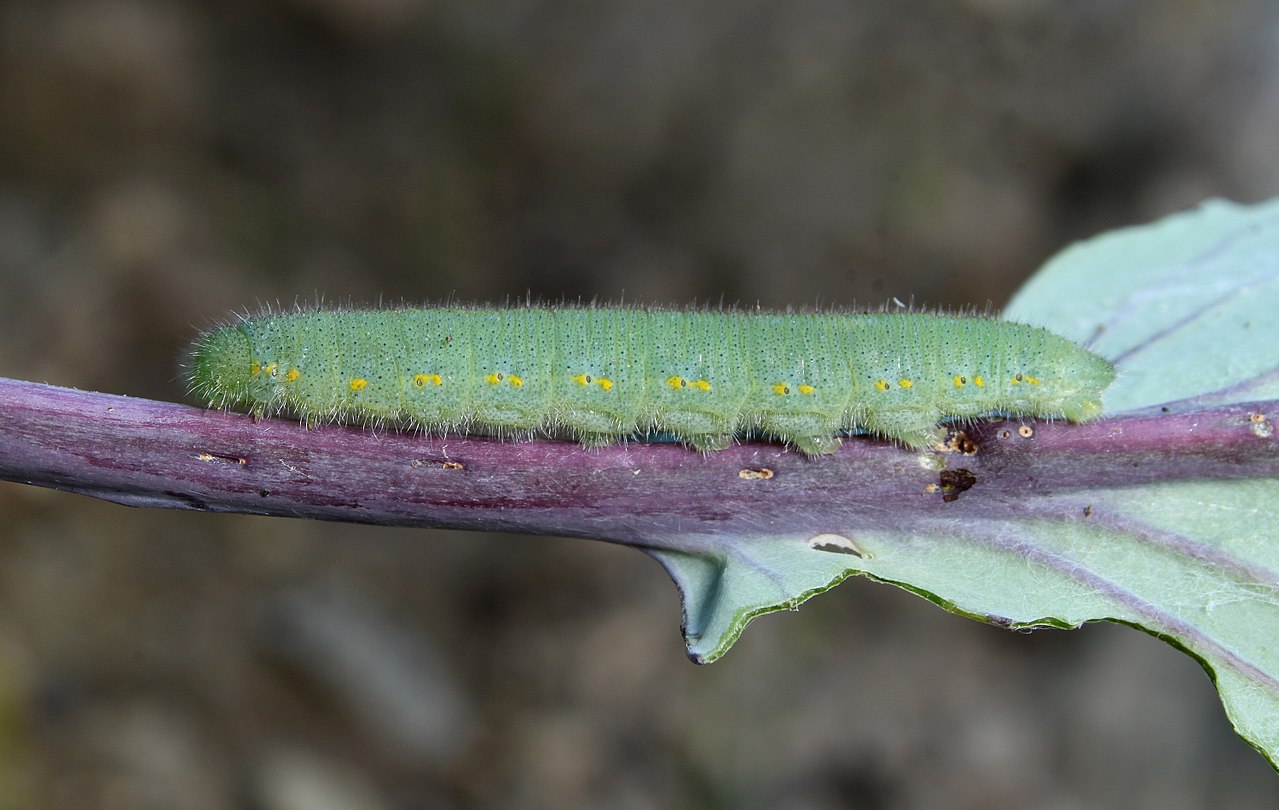
Prevent & Combat Mildew
If your cabbage plants are infested with mildew, you can water them with horsetail manure. This is very easy to make. You need horsetail, water and a bucket. Then you can proceed according to the same principle as with the nettle liquid manure. To prevent the fungus, a mixed culture with garlic can also be worthwhile. You can find everything you need to know about preventing and combating mildew here.
Preventing Cabbage Hernia: Observe Crop Rotation
Cabbage hernia is also a typical disease of all cruciferous plants (Brassicaceae). The fungal disease causes the cabbage to grow poorly and later, even with sufficient watering, the leaves droop and turn yellow. You can avoid this by rotating your cabbage plants, i.e. not replanting in a spot where cabbage has already grown. After about 4 years, the soil will have regenerated and you can plant your cabbage plants there again. If you have symptomatic wilted cabbage plants in your garden despite having rotated them, dig them up and check the roots.
Cabbage Hernia or Cabbage Gall Weevil?
A typical distinguishing feature there are bulbous thickenings. To be absolutely sure that it really is the fungus, you need to cut the thick roots. If they are hollow, it is probably the cabbage gall weevil. If the roots are white and not hollow, it is most likely the cabbage hernia fungus. In both cases, you should unfortunately dispose of your plants as quickly as possible, otherwise other plants may be infested. But beware: the cabbage hernia fungus can also survive in compost and infect your plants again later. It is therefore better to dispose of infected plants in household waste.
Propagate Cabbage: Here's How
Head cabbage species such as pointed cabbage are normally biennial plants. This means that they form the head in the first year, with which the plant overwinters. In the second year, the seed carrier develops, which can be harvested after flowering. However, today's varieties are difficult to overwinter in the field, which is why most gardeners prefer to buy cabbage seeds.
Two methods have become established in the hobby sector: Firstly, the entire plant can be dug up and planted in pots, tubs or boxes in a cellar. However, this requires watering from time to time. In addition, the heads of savoy cabbage in particular start to rot quickly, which means that old leaves have to be cleaned off regularly. As a second option, the heads can be harvested when transplanting in the fall and only the stalks stored in containers for the winter. In this case, the cuts should also be dusted with ash or charcoal to prevent disease infestation on the stalks. A little soil mixed with wood shavings is suitable as a substrate. The wood shavings hold the water well, which is why watering is rarely necessary. You will achieve greater overwintering success if you take your plants outside on bright, frost-free days or place them in a bright basement window.
I hope you have gained a good overview of pointed cabbage. If you have any questions or comments, please write to us at [email protected].
Want to get helpful gardening tips all year round and plan your own beds in the best possible way? Then register here or download the Fryd app for Android or iOS.
Fryd - Your digital bed planner
Cover picture by Alexander Vollmer on Pixabay

Isabell
Isabell studies agricultural sciences and loves to be surprised by nature and its complexity again and again. Herbs - whether gathered wild or in the garden - are her passion.
Learn MoreCurrent Topics in the Community

Hello lovelies, I could use your advice...this year I planted @rosenkohl and @gruenkohl for the first time. The kale grew really well after planting in the fall and had really big leaves until the cabbage white butterfly attacked it. I then harvested quite a bit and put netting over it, but somehow it hasn't really recovered since then. We've had frost since last week and it snowed yesterday, the temperature during the day is 0°C. The kale and Brussels sprouts are now looking very weak and I'm wondering where the fault lies, as both varieties should be able to withstand such low temperatures? Does anyone have any tips?
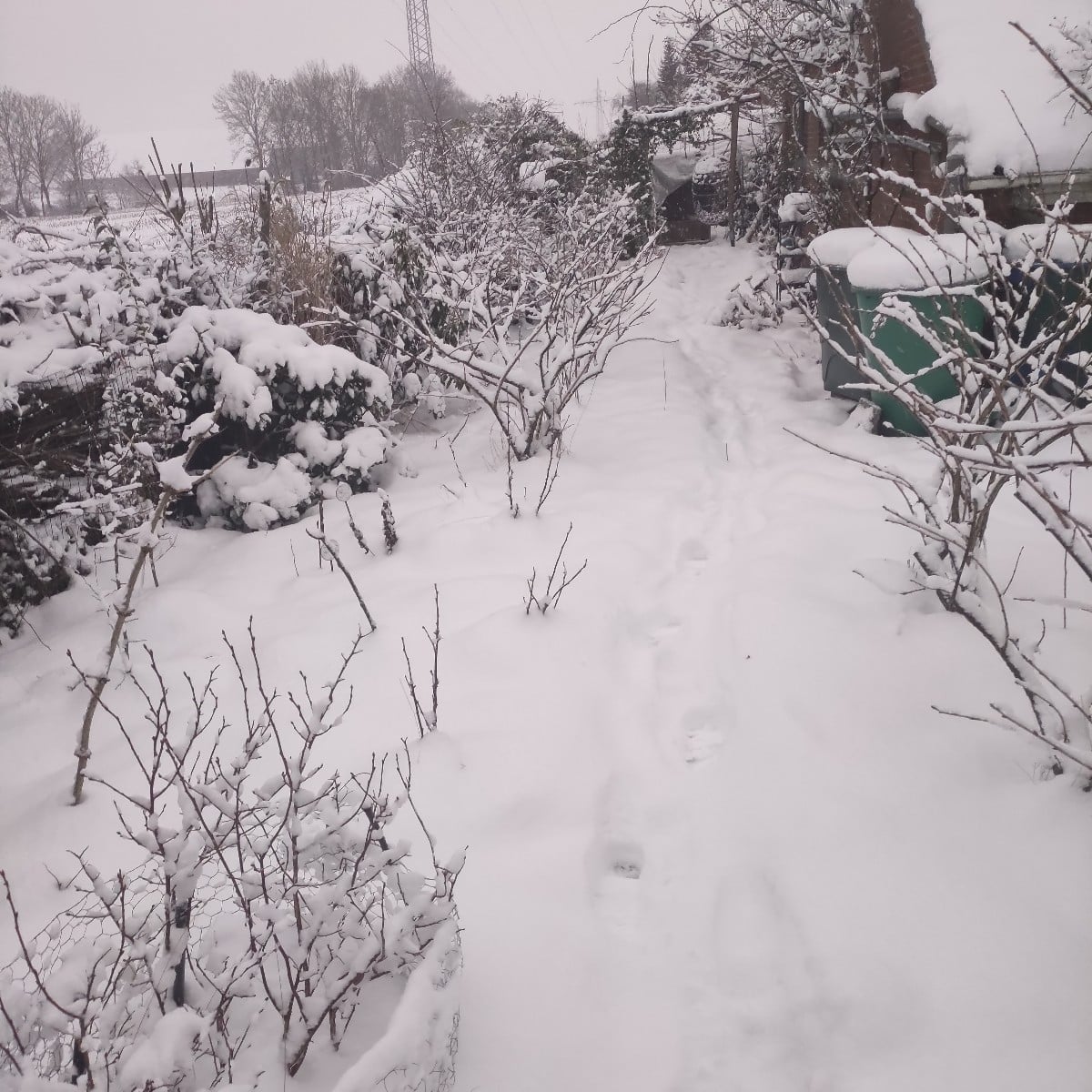
Liked 1 times
It stops being beautiful. ☃️☃️
Show 1 answer
Liked 14 times
Hello dear community, so far I have always read along quietly and quietly and got great tips from your contributions. Thank you for that! It's great that this group exists and I'm looking forward to continuing the exchange in 2026. Since 2020, I have been looking after a 3000m² forest and meadow property in Heidesee (Brandenburg), which used to be a children's holiday camp - nowadays insects, birds and occasionally me are allowed to vacation here. The garden is deliberately designed to be close to nature: Numerous wild flowering areas and fruit trees have been planted, a pond has been created and deadwood hedges have been built, which have already become valuable habitats for some animals. My experience in fruit and vegetable growing is somewhere in the solid middle ground - enough knowledge to celebrate success and enough of a learning curve to remain humble. I particularly love attracting animals and insects to the garden, observing them and creating retreats and quarters for them. In short: I garden with heart, curiosity and the firm goal that as many small (and large) garden inhabitants as possible feel at home here.
Show 9 answersPopular Articles

Overwintering Parsley: How to Do It Successfully

How to Grow Lettuce in Winter: Varieties, Sowing, Harvesting

Growing Sage Plant: Tips for Sowing and Harvesting

What Herbs Can Be Planted Together?

Create & Design a Permaculture Garden

Overwintering Plants: Tubs, Pots and Raised Beds

Pruning, Fertilizing & Propagating Currants: Care Tips

Pruning Raspberries: How to Do It

Vegetable Garden With Greenhouse: How to Use Greenhouse Effect

Winterizing Beds and the Garden: How to Do It
FAQ
Pointed cabbage is a variety of headed cabbage. Its shape is very characteristic, as the heads are pointed. In contrast to other headed cabbages, these varieties do not take up as much space in the garden.
What are good companion plants for pointed cabbage?
You can plant vegetables such as beans, peas, potatoes, leeks, carrots, lettuce or celery next to pointed cabbage. Herbs also complement the cabbage plant well. Good neighbors include dill, chamomile, lemon balm and thyme.
When is pointed cabbage planted and sown?
Pointed cabbage can be planted outdoors between March and September. For direct sowing, plant the seeds directly into the bed. If you want to preplant, start 6 to 8 weeks before planting, i.e. between the end of January and July.
When and how do you harvest pointed cabbage?
The harvest period for pointed cabbage varies between May and November/early December, depending on the variety and sowing time. Simply cut off the head with a sharp knife. The head of cabbage will then keep for around two weeks.